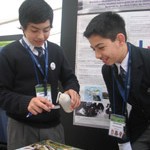 Since 2000, the Omora Park in Puerto Williams, Chile has conducted a permanent environmental education workshop as an elective in the local elementary school.
Since 2000, the Omora Park in Puerto Williams, Chile has conducted a permanent environmental education workshop as an elective in the local elementary school.
This course has allowed the school to be one of the first in the region to obtain environmental certification by the Chilean Environment Commission and also permits the students of the Omora Workshop to participate in the annual Magallanes Regional Science Fair with the support of the Explora Program of the Chilean Science Commission, the Provincial Government and the Institute of Ecology and Biodiversity’s Outreach Program funded by the Millennium Scientific Initiative.
This course also is supported by the researchers and students working in the Omora Park, and all graduate students conducting their theses and dissertations at Omora, for example, also serve as teachers in the workshop.
In previous years, the students of the Omora Workshop have placed well at the regional science fair, even coming in first place. However, we are very pleased to announced that this year the Omora students won first prize on the national level!
Their mentor was Tamara Contador, a UNT Ph.D. student in Biology who works with the Sub-Antarctic Biocultural Conservation Program, who helped them develop the award-winning project entitled “Diversity and abundance of freshwater invertebrates on rocky and submerged wood habitats in the Ukika River, Navarino Island, Cape Horn Biosphere Reserve,” which was presented in the competition in Concepcion by Carlos Saavedra and Francisco Olivares.
Congratulations to the students, mentors and teachers of the Omora Park’s education program in Puerto Williams!
Category Archives: In the News!
Students from Puerto Williams Again at the Top of Regional Science Fair
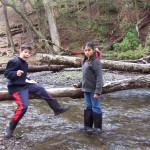 Yet again, students from the Puerto Williams School who participate in the Omora Workshop on Natural History have taken first place in the regional science fair, sponsored by Explora-CONICYT. This year, the Omora-Puerto Williams team was represented by two groups from primary and high school. The first team, including Carlos Saavedra and Francisco Olivares, won FIRST PRIZE in the elementary student category. These students were led by Tamara Contador, a Ph.D. student in Biology from the University of North Texas and the Institute of Ecology and Biodiversity, and teacher Maria Anguita. They presented their work on Richness and abundance of freshwater invertebrates in submerged rocky and wood habitat of the Ukika River, Navarino Island, Cape Horn Biosphere Reserve (55º S).
Yet again, students from the Puerto Williams School who participate in the Omora Workshop on Natural History have taken first place in the regional science fair, sponsored by Explora-CONICYT. This year, the Omora-Puerto Williams team was represented by two groups from primary and high school. The first team, including Carlos Saavedra and Francisco Olivares, won FIRST PRIZE in the elementary student category. These students were led by Tamara Contador, a Ph.D. student in Biology from the University of North Texas and the Institute of Ecology and Biodiversity, and teacher Maria Anguita. They presented their work on Richness and abundance of freshwater invertebrates in submerged rocky and wood habitat of the Ukika River, Navarino Island, Cape Horn Biosphere Reserve (55º S).
UMAG Organizes Coastal Beautification on Navarino Island
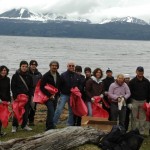 As part of a way to integrate families and a diversity of ages, UMAG local environmental education coordinator Cristobal Pizarro organized a trash pick up day on the north coast of Navarino Island, near Puerto Williams. The activity had the participation of the Chilean Navy and the Blanca Estella Foundation and was supported by the Cape Horn Municipality and the Institute of Ecology and Biodiversity. A follow up activity is planned for the 24th of October.
As part of a way to integrate families and a diversity of ages, UMAG local environmental education coordinator Cristobal Pizarro organized a trash pick up day on the north coast of Navarino Island, near Puerto Williams. The activity had the participation of the Chilean Navy and the Blanca Estella Foundation and was supported by the Cape Horn Municipality and the Institute of Ecology and Biodiversity. A follow up activity is planned for the 24th of October.
Sub-Antarctic Biocultural Conservation Program Takes Second Place in Worldwide Competition
 The Omora Park and the Sub-Antarctic Biocultural Conservation Program (joint efforts between the Universidad de Magallanes, the University of North Texas and the Institute of Ecology and Biodiversity) were recently awarded second place in the 2010 Raanan Weitz Competition, an annual, worldwide call for proposals on innovative strategies to achieve sustainable development.
The Omora Park and the Sub-Antarctic Biocultural Conservation Program (joint efforts between the Universidad de Magallanes, the University of North Texas and the Institute of Ecology and Biodiversity) were recently awarded second place in the 2010 Raanan Weitz Competition, an annual, worldwide call for proposals on innovative strategies to achieve sustainable development.
The submission, led by Dr. Ricardo Rozzi and Dr. J. Baird Callicott with the support of Dr. Francisca Massardo of the Universidad de Magallanes and UNT undergraduate student Kelli Moses, was entitled “The Omora Ethnobotanical Park: Conceptual and Methodological Advances for Linking Ecological Sustainability and Social Well Being in Southern South America.”
Theory meets practice in this model framework that uniquely integrates philosophy and ethics with real life working applications in ecotourism and conservation. The success of sustainability hinges, in part, on making the results of academic pursuits more accessible to larger audiences. ‘This project is an example of academic research engaging both university and local communities; not only does it facilitate the dialogue on conservation with collaborators throughout the Americas, but it also provides a meaningful context for local individuals and institutions to learn the value of place through the lens of multiple academic disciplines – from the humanities to the sciences – and also the value of traditional ecological knowledge from multiple cultural perspectives’ says Dr. Christopher Anderson, coordinator of the Sub-Antarctic Ecosystems and Biocultural Conservation research cluster.
Read more.
Cape Horn Researcher Invited to Sustainable Islands Conference in Galapagos
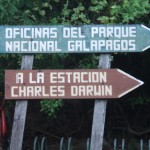 Source: Charles Darwin Foundation Press Release.
Source: Charles Darwin Foundation Press Release.
Dr. Francisca Massardo, coordinator of the Universidad de Magallanes in Puerto Williams, was recently invited to participate in an international workshop on “Island Cultures and Sustainable Lifestyles,” hosted from 28-30 September at the Charles Darwin Biological Station, Galapagos Islands, Ecuador.
The event brought together international experts from islands of the South Pacific, New Zealand, Easter Island, Fiji, the Orkneys and Galápagos, and Chile, who together with members of local and national institutions, NGOs, and invited guests, exchanged experiences on the themes of island societies and environments.
To inaugurate the workshop, CDF Executive Director Dr. J. Gabriel López underlined the importance of this event: “This is the second in our series of workshops on Island Sustainability. Rather than identify only problems, CDF and our partners are focused on devising sustainable solutions and we wish to draw on experiences from throughout the world that can be applied to Galápagos. This is part of a fresh approach to broadening the conservation agenda by involving Galápagos communities and other stakeholders in an integrated effort to design an archipelago-wide sustainable development model that can serve as a guide for decision making and as an example for the world.”
Felipe Cruz, CDF Director of Technical Assistance, stated that: “The workshop will deepen understanding of the different realities lived in various archipelagos on Earth, but above all, here in Galápagos because of their international fame and unique biodiversity that bring nature and people together.”
Among the principal themes for discussion were:
1. Local production vs. imported goods and services;
2. Consumption patterns and daily life;
3. Human mobility.
This is CDF’s second international “Island Sustainability” workshop among a series programmed for 2010-2011 covering topics such as tourism, energy and transport, water and waste management, and climate change, among others, all linked to island conservation and sustainable development.
Omora Ethnobotanical Park (Cape Horn) and Charles Darwin Station (Galapagos) Sign Collaborative Agreement
During a visit to the Galapagos Islands, financed by an INNOVA-CORFO Project entitled “Ecotourism with a Hand Lens in the Subantarctic Region,” representatives from the academic and tourism sectors from southern Chile and the U.S. held various meetings in Ecuador with the Pontifical Catholic University of Ecuador (PUCE), the International Union for the Conservation of Nature (IUCN), the Regional Office of UNESCO, the Charles Darwin Foundation (CDF) and authorities from the Galapagos National Park and tourism industry.
Dr. Francisca Massardo, director of the CORFO project, commented that the goal of these work sessions was “to learn the experience gained in the Galapagos by the Charles Darwin Station and the National Park in topics of ecotourism, since they have been going down this road for 50 years and as archipelagic regions confront some of the same challenges, such as invasive species.
In the delegation, participating researchers came from the Universidad de Magallanes (UMAG) and the University of North Texas (UNT) included Andrés Mansilla (UMAG), Francisca Massardo (UMAG/Omora), Ricardo Rozzi (UNT/UMAG), Christopher Anderson (UNT/UMAG), Jim Kennedy (UNT), economist Eduardo Camelio (Fundación Omora), and tourism entrepreneur Nicolás Pivcevic (Lakutaia Lodge), the Vice-President for the IUCN Commission on Protected Areas Eduard Mueller, and civil engineer Andrés Marin (Omora).
As a result of these conversations, several agreements were reached, including the establishment of an exchange of experiences and professionals between the Tourism Program at the PUCE and the UMAG. According to Dr. Andres Mansilla, Director of Research and Graduate Programs at the UMAG, “we will work together with the Masters of Conservation Biology at PUCE and the Masters of Science with Mention in Management and Conservation of Natural Resources in Subantarctic Environments at UMAG to address in a first phase collaborations in courses of mutual interest, using tools such as videoconference or the revision of projects and theses.”
At the same time, a cooperative agreement was signed between the Omora Ethnobotanical Park and the Charles Darwin Scientific Station with the principle objective of carrying out actions that support conservation and sustainability of the Galapagos (Ecuador) and Cape Horn (Chile) Archipelagos.
During the signing of the agreement, Dr. Gabriel López, Executive Director CDF, commented “the inter-institutional cooperative agreement between both organizations will put into place a series of joint collaborations and in the future projects on various fronts, which will generate information between both countries that serves to support conservation in these fragile ecosystems, like the Galapagos and the Cape Horn Biosphere Reserve.”
For his part, Dr. Ricardo Rozzi, Director of the Omora Ethnobotanical Park, underlined the importance of this collaboration: “For us, it is very valuable to count on the experience and assistance of the CDF for the protection and conservation of ecosystems that are as fragile as the Galapagos Islands and with a high degree of similarity with what exists in Cape Horn, where we also work to achieve the conservation of biodiversity and sustainability.”
This bi-institutional agreement is of utmost importance, given that it will involve collective work in various spheres, achieving in this way the exchange and technical support for concrete actions that favor the well-being and conservation of areas as relevant for the Cape Horn Archipelago as invasive species, the training of ecotourism guides and the implementation of policies for protected areas to mitigate potential negative effects of the tourism industry.
First Travel Learn Trip Headed to Cape Horn
 The University of North Texas is organizing its first ever Travel Learn Trip to the Cape Horn Biosphere Reserve to coincide with the inauguration of the Cape Horn Field Station in January 2011. Dianne Gibbons, Travel Learn Coordinator, and the Sub-Antarctic Biocultural Conservation Program have collaborated closely since fall 2010 to realize this goal. The itinerary includes stays in luxury accomodations at the Hotel José Nogeira and the Lakutaia Ecolodge. In addition, participants will navigate with researchers from the Omora Park to Puerto Williams aboard the Stella Australis, seeing first hand the biocultural wonders of the Cape Horn Archipelago. The finale will occur at the Omora Park and Puerto Williams, where a scientific workshop will coincide with the inauguration of the Cape Horn Field Station. For more information, contact Dianne Gibbons (dianne.gibbons@unt.edu) or visit: http://call.unt.edu/tourlist
The University of North Texas is organizing its first ever Travel Learn Trip to the Cape Horn Biosphere Reserve to coincide with the inauguration of the Cape Horn Field Station in January 2011. Dianne Gibbons, Travel Learn Coordinator, and the Sub-Antarctic Biocultural Conservation Program have collaborated closely since fall 2010 to realize this goal. The itinerary includes stays in luxury accomodations at the Hotel José Nogeira and the Lakutaia Ecolodge. In addition, participants will navigate with researchers from the Omora Park to Puerto Williams aboard the Stella Australis, seeing first hand the biocultural wonders of the Cape Horn Archipelago. The finale will occur at the Omora Park and Puerto Williams, where a scientific workshop will coincide with the inauguration of the Cape Horn Field Station. For more information, contact Dianne Gibbons (dianne.gibbons@unt.edu) or visit: http://call.unt.edu/tourlist
UNT-UMAG Launch New Edition of Multi-Ethnic Bird Guide
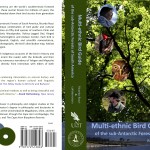 In 1995, Ricardo Rozzi and a group of colleagues working on Chiloe Island first had the idea of creating a bird guide that would take into account diverse forms of knowing these abundant and diverse creatures. Over the past 15 years, numerous photographers, artists, researchers, poets, students and native elders have worked to produce the the Multi-Ethnic Bird Guide to the Sub-Antarctic Forests of South America. In this unique book, Rozzi and collaborators combine science and traditional ecological knowledge about fifty bird species of southern Chile, providing its names in Yahgan, Mapudungun, Spanish, English and scientific nomenclature, an ecological description, full color photographs and distribution maps. According to Dr. Chris Elphick (co-author of the Sibley Guide to Bird Life and Behavior) this publication is “highly original in its approach of combining information on natural history and biodiversity with information on the region’s human culture and linguistic diversity.”
In 1995, Ricardo Rozzi and a group of colleagues working on Chiloe Island first had the idea of creating a bird guide that would take into account diverse forms of knowing these abundant and diverse creatures. Over the past 15 years, numerous photographers, artists, researchers, poets, students and native elders have worked to produce the the Multi-Ethnic Bird Guide to the Sub-Antarctic Forests of South America. In this unique book, Rozzi and collaborators combine science and traditional ecological knowledge about fifty bird species of southern Chile, providing its names in Yahgan, Mapudungun, Spanish, English and scientific nomenclature, an ecological description, full color photographs and distribution maps. According to Dr. Chris Elphick (co-author of the Sibley Guide to Bird Life and Behavior) this publication is “highly original in its approach of combining information on natural history and biodiversity with information on the region’s human culture and linguistic diversity.”
Dr. Christopher Anderson, coordinator of the Sub-Antarctic Biocultural Conservation Program, noted that “this is the first in a series of publications that Dr. Rozzi has preposed and that our program has undertaken to establish and editorial line in biocultural conservation between the University of North Texas and the Universidad de Magallanes. The goal is to create field guides, translations and original scholarship that facilitates communication and dialogue between the humanities and the sciences and between Latin America and English-speaking America.”
To launch this book, the Sub-Antarctic Biocultural Conservation Program hosted an evening celebration of art, poetry, philosophy and science, which was headlined by co-author, poet and uñumche (Mapuche birdman) Lorenzo Aillapán to UNT to offer his poetry in a public presentation and to various classes. Likewise, Paola Vezzani, designer of the new edition and currently Regional Director of Culture for Magallanes, attended the launching ceremony to talk about the link this book expresses between science and the arts. These events also coincided with the one year anniversary of the Sub-Antarctic Biocultural Conservation Program, which allowed as well the inauguration of the program’s new offices in the EESAT Building, an event attended by the university administration, faculty, student and other friends.
For more information or to order this new book visit UNT Press.
Program Student Wins UNT Award for Best Natural Science Poster
 Michael Simanonok first visited Chile as a Tracing Darwin’s Path student in 2008. After that experience he changed his focus within his major in Biological Sciences to concentrate on ecology. Since then, he has worked for the Lewisville Aquatic Ecosystem Research Facility and was recently selected for a Sub-Antarctic Biocultural Conservation Program International Research Experience for Students award, funded by the US National Science Foundation. While on his IRES fellowship, Mike lived in southern Chile and Argentina for 3 months, collaborating with Drs. Guillermo Martínez Pastur and Vanessa Lencinas at the Centro Austral de Investigaciones Científicas in Ushuaia, Argentina. His research subsequently was transformed into an honors thesis studying the effects of forestry management and invasive beavers on stream ecosystems in Tierra del Fuego. Now, Mike has also been awarded the “Best Poster” in the natural science category at the UNT Scholar’s Day event, a university-wide initiative to highlight undergraduate research at UNT. Congratulations Mike!
Michael Simanonok first visited Chile as a Tracing Darwin’s Path student in 2008. After that experience he changed his focus within his major in Biological Sciences to concentrate on ecology. Since then, he has worked for the Lewisville Aquatic Ecosystem Research Facility and was recently selected for a Sub-Antarctic Biocultural Conservation Program International Research Experience for Students award, funded by the US National Science Foundation. While on his IRES fellowship, Mike lived in southern Chile and Argentina for 3 months, collaborating with Drs. Guillermo Martínez Pastur and Vanessa Lencinas at the Centro Austral de Investigaciones Científicas in Ushuaia, Argentina. His research subsequently was transformed into an honors thesis studying the effects of forestry management and invasive beavers on stream ecosystems in Tierra del Fuego. Now, Mike has also been awarded the “Best Poster” in the natural science category at the UNT Scholar’s Day event, a university-wide initiative to highlight undergraduate research at UNT. Congratulations Mike!
Program Student Assistant Wins “Best Employee Award”
 Kelli Moses has worked for the Sub-Antarctic Biocultural Conservation Program since before it existed. As the student assistant for the Tracing Darwin’s Path study abroad program, Kelli has been a vital contact between the program and UNT’s study body. For these and other efforts, Kelli was recently selected at a university level for recognition as a “2010 Student Employee of the Year” award. Congratulations Kelli!
Kelli Moses has worked for the Sub-Antarctic Biocultural Conservation Program since before it existed. As the student assistant for the Tracing Darwin’s Path study abroad program, Kelli has been a vital contact between the program and UNT’s study body. For these and other efforts, Kelli was recently selected at a university level for recognition as a “2010 Student Employee of the Year” award. Congratulations Kelli!
Sub-Antarctic Biocultural Conservation Session at UNT Scholars Day
 In the annual undergraduate Scholars Day at UNT, this year the Sub-Antarctic Biocultural Conservation Program was represented with an organized session of 3 posters that included:
In the annual undergraduate Scholars Day at UNT, this year the Sub-Antarctic Biocultural Conservation Program was represented with an organized session of 3 posters that included:
–> Stephen Dillenberg presenting his analysis of the historical trends in conservation research regarding the inclusion of ecological and social criteria. His findings showed a clear bias within academia to consider principally ecological considerations, while broader social criteria are still lacking.
–> Kelli Moses and a host of collaborators for their part presented the Miniature Forests of Cape Horn and how this novel research-conversation program has been able to link local, regional, national and international scales.
–> Michael Simanonok, for his part, gave the results of his honors thesis, which was supported by an NSF IRES grant. His work explored the dual effects of forestry and invasive beavers on stream ecosystems in Tierra del Fuego, finding that well managed forestry practices were able to maintain natural biodiversity and stream function, while beaver meadows exhibited high impacts on streams (see previous story on Mike’s award).
U.S. State Department Visits Cape Horn to Implement Binational Cooperation
 In January 2010, the U.S. and Chilean governments agreed on their binational environmental cooperation agenda. For the first time, this plan includes the implementation of the Cape Horn Biosphere Reserve as a priority for both governments. In the meetings held in Washington, Drs. Ricardo Rozzi, Mary Kalin and Kenneth Sewell represented our program’s activities in the governmental meetings, in addition to sustaining talks with the Ecological Society of America and the National Science Foundation. In April, Dr. Jacqueline Tront from the State Department’s Office of Environmental Policy visited the Magallanes Region to hold meetings with the regional government authorities, including the regional director of CORFO (see photo) and the governor of the Chilean Antarctic Province. In addition, she held conversations with University of Magallanes officials and regional tourism operators to understand the meaning and impact of the Sub-Antarctic Biocultural Conservation Program’s effort to link research and sustainability. The State Department is interested not only in supporting this novel venture in Cape Horn, but also taking the lessons learned at this remote wilderness area for application in other parts of Latin America and the world where their office works to mitigate the environmental impacts of trade.
In January 2010, the U.S. and Chilean governments agreed on their binational environmental cooperation agenda. For the first time, this plan includes the implementation of the Cape Horn Biosphere Reserve as a priority for both governments. In the meetings held in Washington, Drs. Ricardo Rozzi, Mary Kalin and Kenneth Sewell represented our program’s activities in the governmental meetings, in addition to sustaining talks with the Ecological Society of America and the National Science Foundation. In April, Dr. Jacqueline Tront from the State Department’s Office of Environmental Policy visited the Magallanes Region to hold meetings with the regional government authorities, including the regional director of CORFO (see photo) and the governor of the Chilean Antarctic Province. In addition, she held conversations with University of Magallanes officials and regional tourism operators to understand the meaning and impact of the Sub-Antarctic Biocultural Conservation Program’s effort to link research and sustainability. The State Department is interested not only in supporting this novel venture in Cape Horn, but also taking the lessons learned at this remote wilderness area for application in other parts of Latin America and the world where their office works to mitigate the environmental impacts of trade.
Subantarctic Biocultural Conservation Program Publishes New Book on the Invertebrates of Cape Horn
 Jaime Ojeda, UMAG M.S. Conservation student and Tamara Contador, UNT Ph.D. Biology student, have both worked at the Omora Park for several years. In 2008, they proposed to their advisers that they apply for funding from the Chilean National Environment Commission to support their research regarding marine and freshwater invertebrates, a grant which they won. The resulting project has allowed them not only to conduct their theses, but also to work in the local school with children and other residents to explore the “hidden” biodiversity of small organisms found underwater. Now, this project has produced a field guide entitled Guide the the Aquatic Invertebrates of the Cape Horn Biosphere Reserve. With the aid of Drs. Ricardo Rozzi, Christopher Anderson, James Kennedy, Andrés Mansilla and Francisca Massardo, the students indicate how to identify and describe the role of these small creatures in our subantarctic ecosystems. The book is expected to help educators, tourism operators and the general public get to know these often unknown and unappreciated members of our biotic community. With the support of the University of North Texas and the Universidad de Magallanes, the Omora Park and the Subantarctic Biocutltural Conservation Program is also formalizing an editorial line between UMAG and UNT that will continue to produce these natural history guides for the subantarctic ecoregion, as well as other texts related to environmental ethics and biocultural conservation. Stay tune for news on the launching of the Multi-ethnic Bird Guide to the Subantarctic Forests of Southern South America in May!
Jaime Ojeda, UMAG M.S. Conservation student and Tamara Contador, UNT Ph.D. Biology student, have both worked at the Omora Park for several years. In 2008, they proposed to their advisers that they apply for funding from the Chilean National Environment Commission to support their research regarding marine and freshwater invertebrates, a grant which they won. The resulting project has allowed them not only to conduct their theses, but also to work in the local school with children and other residents to explore the “hidden” biodiversity of small organisms found underwater. Now, this project has produced a field guide entitled Guide the the Aquatic Invertebrates of the Cape Horn Biosphere Reserve. With the aid of Drs. Ricardo Rozzi, Christopher Anderson, James Kennedy, Andrés Mansilla and Francisca Massardo, the students indicate how to identify and describe the role of these small creatures in our subantarctic ecosystems. The book is expected to help educators, tourism operators and the general public get to know these often unknown and unappreciated members of our biotic community. With the support of the University of North Texas and the Universidad de Magallanes, the Omora Park and the Subantarctic Biocutltural Conservation Program is also formalizing an editorial line between UMAG and UNT that will continue to produce these natural history guides for the subantarctic ecoregion, as well as other texts related to environmental ethics and biocultural conservation. Stay tune for news on the launching of the Multi-ethnic Bird Guide to the Subantarctic Forests of Southern South America in May!
Yet Another Fulbrighter in Cape Horn!
With only 2,000 human inhabitants, Cape Horn is quite likely the place on earth with the highest number of Fulbrighters per capita! To the existing cohort of 4, including Juan Harcha, Christopher Anderson, Ricardo Rozzi and James Kennedy, we are now proud to announce that Jean-Paul Zagarola has been selected for a Fulbright Fellowship in 2011 to conduct research in the Cape Horn Biosphere Reserve associated with community-based watershed management and the perception and valuation of ecosystem services of watersheds. Mr. Zagarola will be admitted to the Environmental Science Program at the University of North Texas in the fall of 2010, where he will pursue a masters degree under the mentorship of Drs. Anderson and Kennedy. “This is truly an exceptional achievement for JP. In addition, as the first new recruit since our program was formalized at UNT and the Universidad de Magallanes, we are very pleased. If all goes well he will become the first joint masters of subantarctic biocultural conservation student we produce with the UMAG as well”, said Christopher Anderson regarding this news. For more on previous Fulbright winners from Cape Horn click here.
